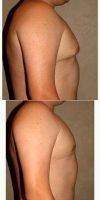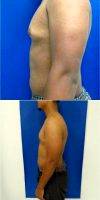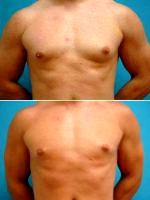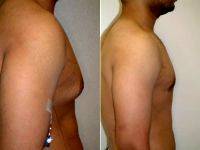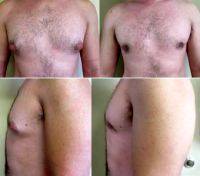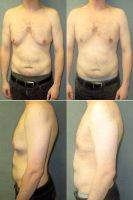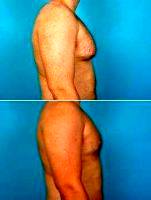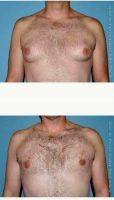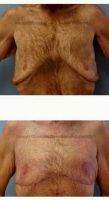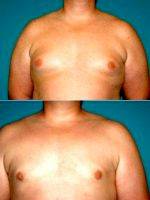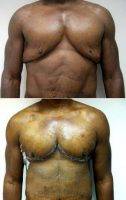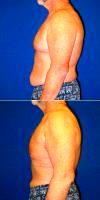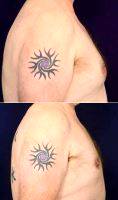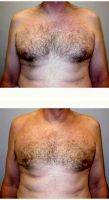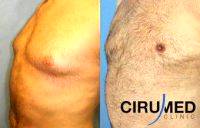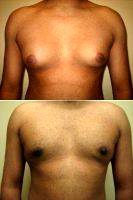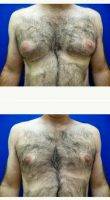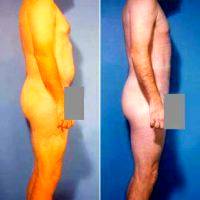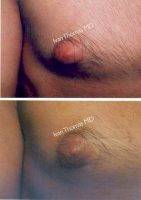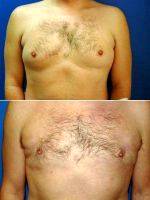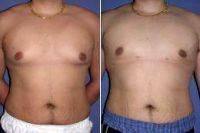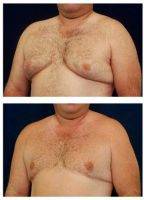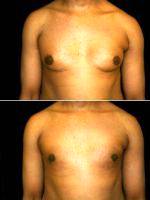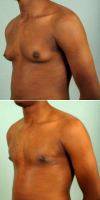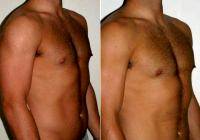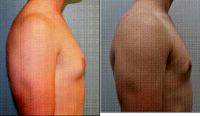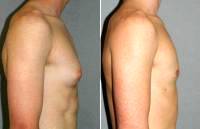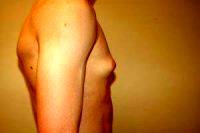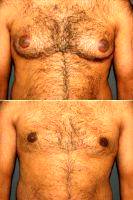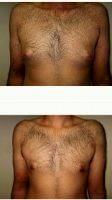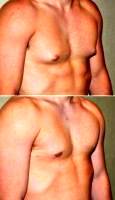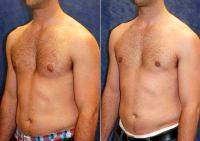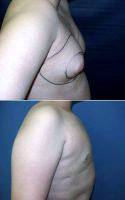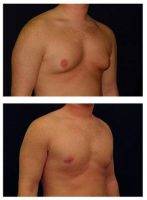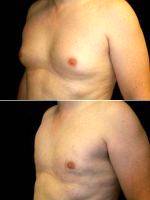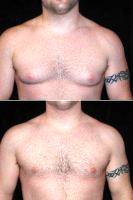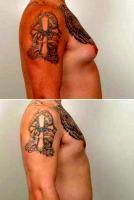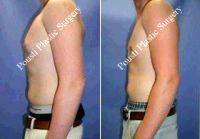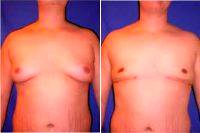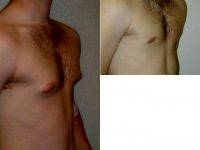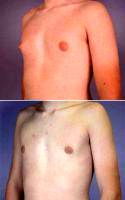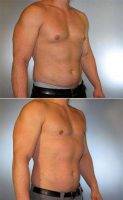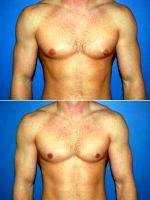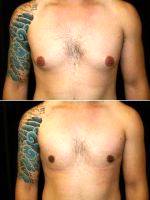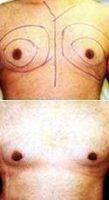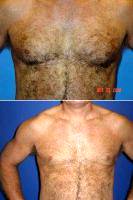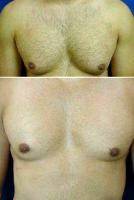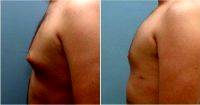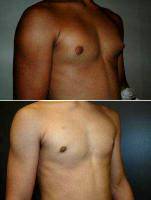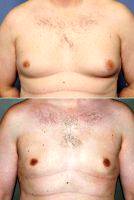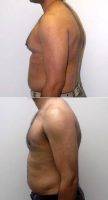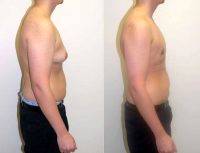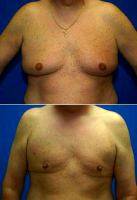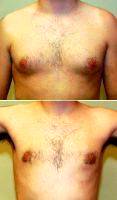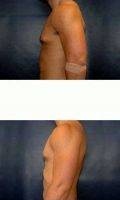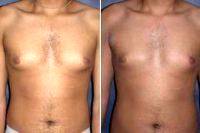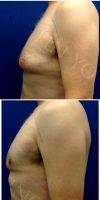Before And After Gyno Surgery
Look at the pictures before and after gyno. Gynecomastia is derived from the Greek term ‘gynec’ for feminine, and the Greek term ‘mastos’ for breast.
The condition involves excessive development of the breast in the male. Excess breast tissue may be the result of fat (adipose) cells and/or glandular (breast) cells.
Treatment varies with the type and severity of the problem. Also the individual’s age and skin elasticity play a role in the determination of the optimum treatment plan.
Gynecomastia is the condition where males develop enlarged breasts. Gynecomastia is generally linked to hormone inbalances and is not harmful, but it often makes patients feel self-conscious.
Liposuction is one of the procedures used to remove the excess tissue, and in some patients, a direct excision is also needed for best contouring.
Gyno is a benign enlargement of the male breast. Although it won’t kill you, it can be embarrassing.
Most cases result from naturally occurring hormonal changes around the time of puberty, although marijuana, certain prescription medications, and abnormal hormonal conditions can be the culprit.
If the condition lasts for more than 2 years, it is not going away on its own and you may wish to consider surgical correction after a thorough medical evaluation to investigate causes of the condition.
Gynecomastia is excessive breast tissue in a male and is a benign condition.
Most gynecomastia is idiopathic. It can be a natural transition in puberty. It is seen in severe liver disease, steroid use, excessive marijuana smoking, adrenal tumors, testicular tumors, some medications (aldosterone). Most of the time there is no specific cause however.
Gyno is in excess of fat and breast tissue in the chest. This is commonly seen in men who may be overweight, may have experienced significant weight loss, may have used medications including steroids, or for natural but unknown reasons.
In these patients, there are many options for the correction of this deformity. If the fact is diffuse throughout the chest, liposuction is an excellent technique for its correction. If the fat is centrally located, it may be excised easily through a small incision at the base of the areola.
Regardless of the surgery that you receive, it is essential to wear a tight compressive vest garment after the surgery to ensure that the skin adheres smoothly to the underlying muscle.
Gynecomastia refers to male breast enlargement. For most men this usually means fatty chests. But for some men, they can actually have glandular breast tissue.
- 18-24 Year Old Man Treated With Breast Reduction With Dr. Tim Neavin, MD, Beverly Hills Plastic Surgeon
- 18-24 Year Old Man Treated With Gynecomastia Surgery – Male Breast Reduction With Dr Robert Caridi, MD, Austin Plastic Surgeon
- 18-24 Year Old Man Treated With Male Breast Reduction By Doctor Landon Pryor, MD, FACS, Rockford Plastic Surgeon
- Dr. Rikesh T. Parikh, MD, Bellevue Plastic Surgeon Male Breast Reduction Gynecomastia
- 25-34 Year Old Man Treated With Male Breast Reduction (gynecomastia) By Dr Ron Hazani, MD, FACS, Beverly Hills General Surgeon
- 18-24 Year Old Man Treated With Male Breast Reduction By Dr Paul Vitenas, Jr., MD, Houston Plastic Surgeon
- 18-24 Year Old Man Treated With Male Breast Reduction By Dr. Babak Dadvand, MD, Los Angeles Plastic Surgeon
- 18-24 Year Old Man Treated With Male Breast Reduction By Dr. David K. Ward, MD, Surrey Plastic Surgeon
- 22 Year Old Male With Gynecomastia Treated With Direct Excision Of Breast Tissue Only By Dr Steven Turkeltaub, MD, Scottsdale Plastic Surgeon
- 22 Year Old Man With Gynecomastia Treated With Male Breast Reduction With Dr Daniel Brown, MD, FACS, La Jolla Plastic Surgeon
- 25-34 Year Old Man Treated With Male Breast Reduction – Gynecomastia Treatment With Doctor Robert Caridi, MD, Austin Plastic Surgeon
- 25-34 Year Old Man Treated With Male Breast Reduction By Dr Marwan R. Khalifeh, MD, Chevy Chase Plastic Surgeon
- 25-34 Year Old Man Treated With Male Breast Reduction With Doctor Tal T. Roudner, MD, FACS, Miami Plastic Surgeon
- 25-34 Year Old Man Treated With Male Breast Reduction With Dr David F. Pratt, MD, Kirkland Plastic Surgeon
- 25-34 Year Old Man Treated With Male Breast Reduction With Dr. Paul Vitenas, Jr., MD, Houston Plastic Surgeon
- 26 Year Old Man With Gynecomastia By Dr. David J. Levens, MD, Coral Springs Plastic Surgeon
- 27 Year Old Male With Gynecomastia (enlarged Breasts) By Dr. Franklin D. Richards, MD, Bethesda Plastic Surgeon
- 27 Years British Male Gym Trainer Suffering From Male Breast Enlargement With Ptosis For Past 2 Years By Dr. Ashok Govila, FRCS, MCh, MS, Dubai Plastic Surgeon
- 25-34 Year Old Man Treated With Male Breast Reduction By Doctor Adrian Lo, MD, Philadelphia Plastic Surgeon
- 25-34 Year Old Man Treated With Male Breast Reduction By Dr Pedy Ganchi, MD, Ridgewood Plastic Surgeon
- 25 Year Old Male With Severe Gynecomastia After Weight Loss By Dr. Mordcai Blau, MD, New York Plastic Surgeon
- 27yo Male Excision Of Gynecomastia By Doctor Steven J. Smith, MD, Knoxville Plastic Surgeon
- 29 Year Old Male, Gynecomastia With Dr. Stephen T. Greenberg, MD, Woodbury Plastic Surgeon
- 32 Year Old Man Treated With Gynecomastia By Doctor Peter D. Geldner, MD, Chicago Plastic Surgeon
- 35-44 Year Old Man Treated With Male Breast Reduction By Dr Jose Perez-Gurri, MD, FACS, Miami Plastic Surgeon
- 35-44 Year Old Man Treated With Male Breast Reduction With Dr. Thomas Trevisani, Sr., MD, Orlando Plastic Surgeon
- 36 Year Old Male Gynecomastia Patient With Dr Paul M. Gardner, MD, FACS, Naples Plastic Surgeon
- 39 Year Old Male With Psuedogynecomastia After Massive Weight Loss With Dr. David L. Cangello, MD, FACS, New York Plastic Surgeon
- 45-54 Year Old Man Treated With Male Breast Reduction By Doctor Douglas L. Forman, MD, Bethesda Plastic Surgeon
- 45-54 Year Old Man Treated With Male Breast Reduction By Dr Michael Law, MD, Raleigh-Durham Plastic Surgeon
- 58 Year Old Man Treated With Male Breast Reduction By Doctor Michael Zenn, MD, Durham Plastic Surgeon
- Bilateral Gynecomastia Correction With Dr Robert D. Wilcox, MD, Dallas Plastic Surgeon
- Doctor Alexander Aslani, MD, Spain Plastic Surgeon Gynecomastia
- Doctor Arnold S. Breitbart, MD, FACS, Long Island Plastic Surgeon 25 Year Old Male Treated For Gynecomastia
- Doctor Dan Mills, MD, Orange County Plastic Surgeon 24 Year Old Male Treated For Gynecomastia With Liposuction
- Doctor Douglas M. Senderoff, MD, FACS, New York Plastic Surgeon 35-44 Year Old Man Treated With Male Breast Reduction
- Doctor George Commons, MD, Palo Alto Plastic Surgeon Gynecomastia
- Doctor Ivan Thomas, MD (retired), Los Angeles Plastic Surgeon Male Breast Reduction-Gynecomastia
- Doctor Kurtis Martin, MD, Cincinnati Plastic Surgeon Gynecomastia Procedure
- Doctor Max Polo, MD, Miami Plastic Surgeon Male Breast Reduction Gynecomastia
- Doctor Michael Law, MD, Raleigh-Durham Plastic Surgeon Gynecomastia
- Doctor Miguel Delgado, MD, San Francisco Plastic Surgeon Gynecomastia
- Doctor Morgan E. Norris, III, MD, FACS, Houston Plastic Surgeon 18-24 Year Old Man Treated With Male Breast Reduction
- Doctor Otto Joseph Placik, MD, Chicago Plastic Surgeon Male Breast Reduction
- 18-year-old Male With Gynecomastia Receives Breast Reduction By Dr. Jeffrey Rockmore, MD, Albany Plastic Surgeon
- Doctor Ramin Behmand, MD, San Francisco Plastic Surgeon Gynecomastia
- Doctor Richard A. Bartlett, MD, Brookline Plastic Surgeon Gynecomastia
- Doctor Richard L. Dolsky, MD (retired), Philadelphia Plastic Surgeon Male Breast Reduction (Gynecomastia)
- Doctor Samuel N. Pearl, MD, San Jose Plastic Surgeon Male Breast Reduction (Gynecomastia)
- Doctor Thomas C. Wiener, MD, Houston Plastic Surgeon 25-34 Year Old Man Treated With Male Breast Reduction
- Dr Andrew M. Lofman, MD, FACS, Detroit Plastic Surgeon 18-24 Year Old Man Treated With Male Breast Reduction
- Dr Barry L. Eppley, MD, DMD, Indianapolis Plastic Surgeon Gynecomastia Reduction
- Dr Barry L. Eppley, MD, DMD, Indianapolis Plastic Surgeon
- Dr David F. Pratt, MD, Kirkland Plastic Surgeon 25 Yo Man Treated With Liposuction Of Gynecomastia And Abdomen Flanks
- Dr James A. Hoffman, MD, Saint Paul Plastic Surgeon Male Breast Reduction – Gynecomastia
- Dr Laura A. Sudarsky, MD, Fort Lauderdale Plastic Surgeon 18 Yo Male For Gynecomastia, Male Breast Reduction
- Dr Luis A. Mejia, MD, Dominican Republic Plastic Surgeon 25-34 Year Old Man Treated With Male Breast Reduction
- Dr Luis H. Macias, MD, FACS, Los Angeles Plastic Surgeon Male Breast Tissue Removal
- Dr Michael Law, MD, Raleigh-Durham Plastic Surgeon Gynecomastia (Male Breast Reduction)
- Dr Miguel Delgado, MD, San Francisco Plastic Surgeon Gynecomastia
- Dr Richard Silverman, MD, Newton Plastic Surgeon Male Breast Reduction
- Dr Robert D. Wilcox, MD, Dallas Plastic Surgeon
- Dr Sanjiv Kayastha, MD, Albany Plastic Surgeon Gynecomastia With Vaser Liposuction
- Dr Tal T. Roudner, MD, FACS, Miami Plastic Surgeon Dr Tal’s Minimally Invasive Male Breast Reduction
- Dr Tom J. Pousti, MD, FACS, San Diego Plastic Surgeon Gynecomastia
- Dr. Joseph Poggi, MD, Wichita Plastic Surgeon Male Breast Reduction
- Dr. Tom J. Pousti, MD, FACS, San Diego Plastic Surgeon Male Breast Reduction (gynecomastia)
- Dr. Elena Prousskaia Peregudova, FRCS (Plast), London Plastic Surgeon 35-44 Year Old Man Treated With Male Breast Reduction
- Dr. Franklin D. Richards, MD, Bethesda Plastic Surgeon 25 Year Old Male With Gynecomastia Male Breast Enlargement
- Dr. Grant Stevens, MD, Los Angeles Plastic Surgeon Male Breast Reduction
- Dr. Henry Mentz, MD, FACS, Houston Plastic Surgeon 30-year-old Male Gynecomastia
- Dr Carlos Mata, MD, MBA, FACS, Scottsdale Plastic Surgeon 25-34 Year Old Man Treated With Male Breast Reduction
- Dr. Jonathan Hall, MD, Boston Plastic Surgeon 25-34 Year Old Man Treated With Male Breast Reduction
- Dr. Kurtis Martin, MD, Cincinnati Plastic Surgeon Gynecomastia
- Dr. Miguel Delgado, MD, San Francisco Plastic Surgeon Gynecomastia
- Dr. Stuart A. Linder, MD, FACS, Beverly Hills Plastic Surgeon Male Breast Reduction
- Dr. Zoran Potparic, MD, Fort Lauderdale Plastic Surgeon 45-54 Year Old Man Treated With Male Breast Reduction
- Excision Of Gynecomastia By Doctor John Sampson, MD, Miami Plastic Surgeon
- Gynecomastia (Male Breast Reduction) By Dr Tom J. Pousti, MD, FACS, San Diego Plastic Surgeon
- Gynecomastia (Male Breast Reduction) With Dr Vincent D. Lepore, MD, San Jose Plastic Surgeon
- Gynecomastia By Dr. Bill Kortesis, MD, Charlotte Plastic Surgeon
- Gynecomastia By Dr. Richard A. Bartlett, MD, Brookline Plastic Surgeon
- Gynecomastia Reduction By Dr. Barry L. Eppley, MD, DMD, Indianapolis Plastic Surgeon
- Gynecomastia With Dr Jay M. Pensler, MD, Chicago Plastic Surgeon 589
- Gynecomastia With Dr. Jay M. Pensler, MD, Chicago Plastic Surgeon
- Male Breast Reduction (Gynecomastia Treatment) With Doctor Rodney A. Green, MD, Cleveland Plastic Surgeon
- Male Breast Reduction By Doctor Douglas Hendricks, MD, Newport Beach Plastic Surgeon
- Male Breast Reduction By Dr John Nguyen, MD, FACS, Houston Plastic Surgeon
- Male Breast Reduction By Dr. Reza Sadrian, MD, La Jolla Plastic Surgeon
- Male Breast Reduction Gynecomastia With Dr. Max Polo, MD, Miami Plastic Surgeon
- Male Breast Reduction With Doctor Carmen Kavali, MD, Atlanta Plastic Surgeon
- Male Breast Reduction With Dr. Justin Yovino, MD, FACS, Beverly Hills Plastic Surgeon
- Minimally Invasive Approach To Gynecomastia Treatment By Dr James F. Boynton, MD, FACS, Houston Plastic Surgeon






